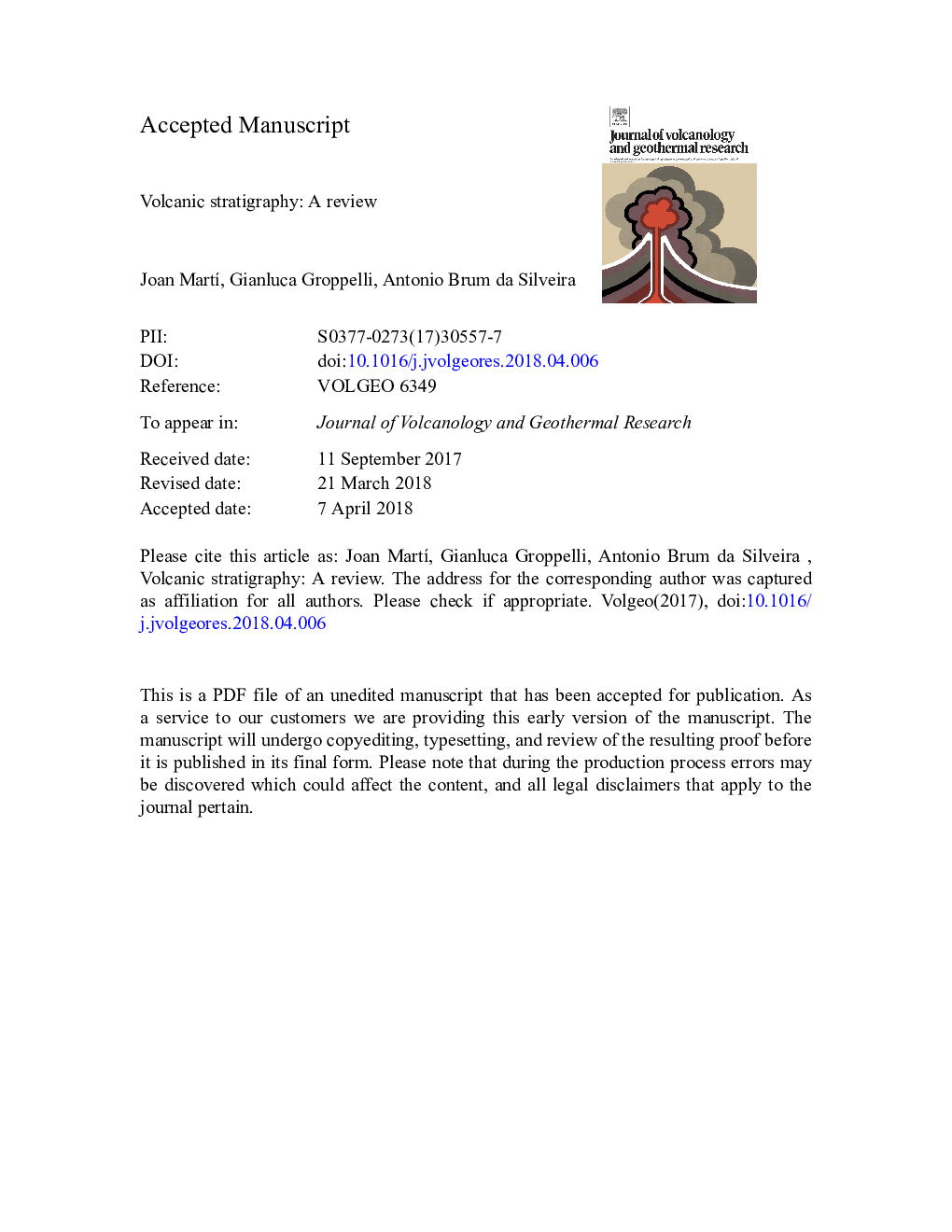| Article ID | Journal | Published Year | Pages | File Type |
|---|---|---|---|---|
| 8911276 | Journal of Volcanology and Geothermal Research | 2018 | 80 Pages |
Abstract
Volcanic stratigraphy is a fundamental component of geological mapping in volcanic areas as it yields the basic criteria and essential data for identifying the spatial and temporal relationships between volcanic products and intra/inter-eruptive processes (earth-surface, tectonic and climatic), which in turn provides greater understanding of the geological evolution of a region. Establishing precise stratigraphic relationships in volcanic successions is not only essential for understanding the past behaviour of volcanoes and for predicting how they might behave in the future, but is also critical for establishing guidelines for exploring economic and energy resources associated with volcanic systems or for reconstructing the evolution of sedimentary basins in which volcanism has played a significant role. Like classical stratigraphy, volcanic stratigraphy should also be defined using a systematic methodology that can provide an organised and comprehensive description of the temporal and spatial evolution of volcanic terrain. This review explores different methods employed in studies of volcanic stratigraphy, examines four case studies that use differing stratigraphic approaches, and recommends methods for using systematic volcanic stratigraphy based on the application of the concepts of traditional stratigraphy but adapted to the needs of volcanological environment.
Related Topics
Physical Sciences and Engineering
Earth and Planetary Sciences
Geochemistry and Petrology
Authors
Joan MartÃ, Gianluca Groppelli, Antonio Brum da Silveira,
